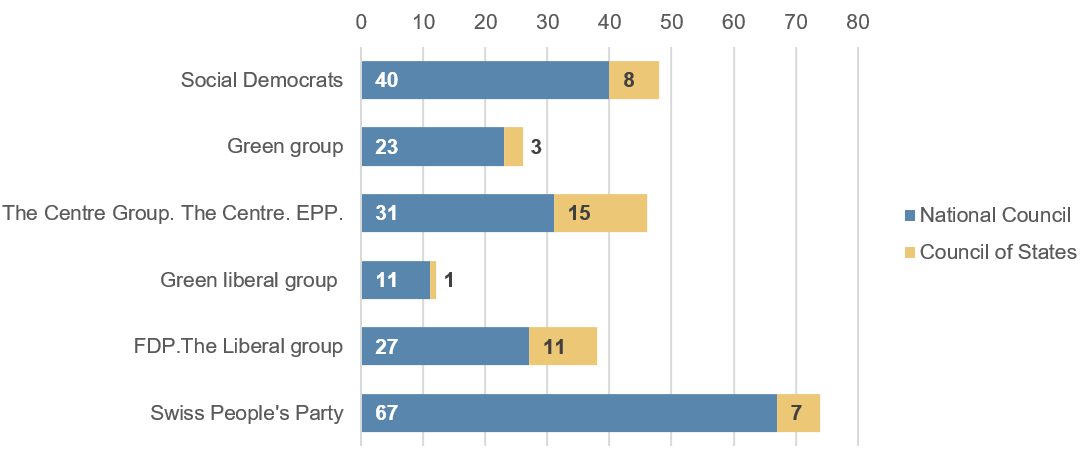Politically speaking, the Federal Assembly is not divided into parties, but into parliamentary groups. The groups comprise members of the same party or of similarly-platformed parties. A parliamentary group is therefore not necessarily to be equated with a party.
At least five members from the same Council are needed to form a parliamentary group. Only informal groups exist in the Council of States.
The parliamentary groups play an important part in opinion-forming processes. They examine the main issues (elections and current issues) before they are submitted to the Councils and attempt to reach a common position, which the members of parliament can defend before their Council, as well as before the media and the general public. In the National Council, members are required to be in a parliamentary group in order to be eligible to sit on a committee.
Statistics on parliamentary groups since 1912 (XLSX)Format Change
Statistics on parliamentary groups since 1912 (csv)Format Change
Parliamentary groups of the 52th legislative period 2023 – 2027 (State: 01.12.2025)
distribution in the councils (State: 01.12.2025)

Composition in the National Council and in the Council of States (State: 01.12.2025)
